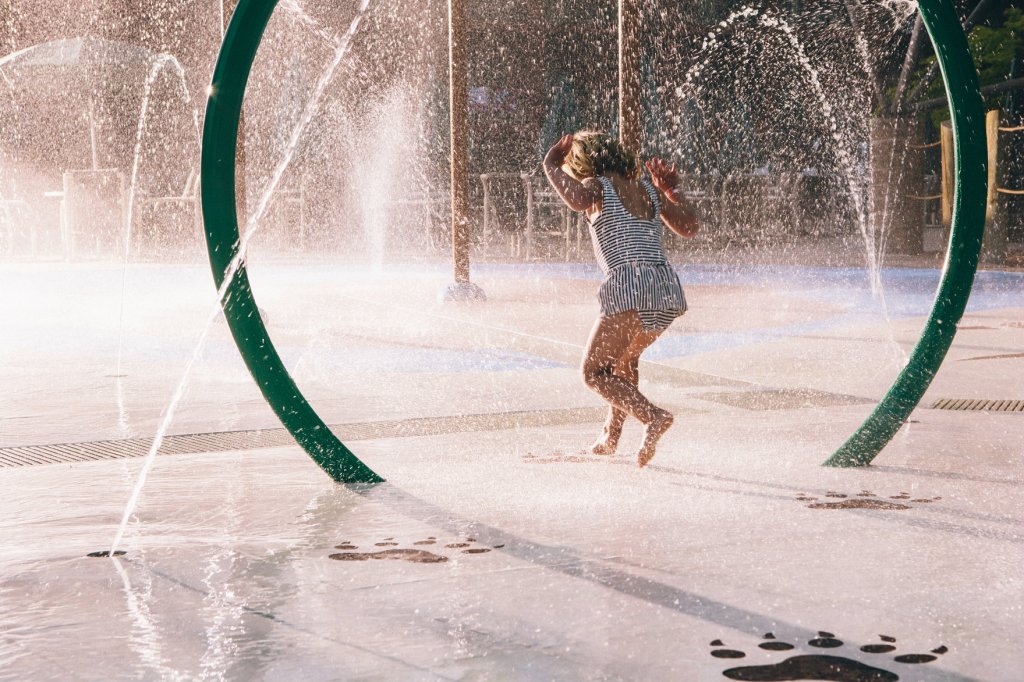NSF International has formed a committee and begun drafting new standard language pertaining to the safety of aquatic floor surfacing. Through the requirements that it imposes, the language likely will discourage use of the most common surface currently seen on spray features — broomed concrete.
The language will appear in NSF’s Standard 50. The language will lay out testing methods that surfacing products must undergo to assess and measure performance under several characteristics, including slip resistance, impact attenuation, and durability against chemically treated water, ultraviolet rays and frequent cleanings. Tests also would determine the safety of the materials themselves, checking for such problems as toxicity, leaching and microbial growth.
The effort comes in response to the number of injuries taking place on hard surfaces, said Jonathan Keller, chair of the standard-writing committee and CEO of Life Floor, a Minneapolis-based surfacing-product manufacture. Dry playgrounds do have such standards, and the injury rate has been reduced, Keller said based on his company’s analysis of data from the Centers for Disease Control and Prevention. However, zero-depth interactive waterfeatures have not been held to the same standards.
“They would be regulated by safety surfacing standards from playgrounds, if they didn’t have water on them,” Keller said.
As its most immediate task, the group will decide how to approach surfacing of interactive water play venues, including splash pads and multilevel play features — “anything where, if it were dry, it would be considered a playground,” Keller said — because they generally have no water depth to help break a person’s fall.
After that, the group plans to approach other areas, such as zero-depth entries, pool decks, and around diving-board platforms. “The goal is to try to create a draft standard for what we think is the highest-need area, which is interactive water play venues, and then test it, figure out how it works and then figure out what applies toward those other aquatics areas where people are barefoot and the floors are consistently wet,” Keller said.
The writing committee, comprised of surfacing-product makers, health officials, designers, engineers, consultants and aquatics operators, is expected to complete the language in time to appear in NSF’s 2018 edition of Standard 50. The committee then plans to submit the stipulations for consideration to be included in the 2019 edition of the Model Aquatic Health Code, Keller said.
